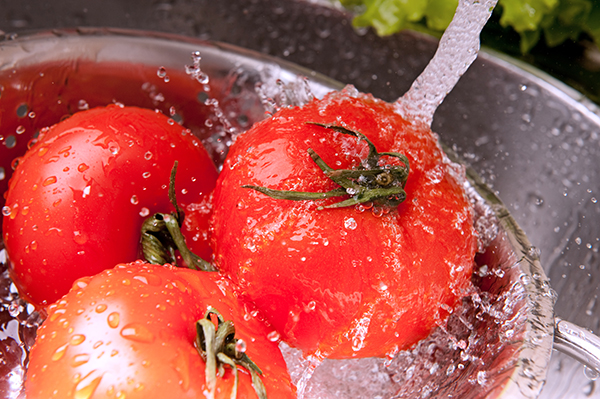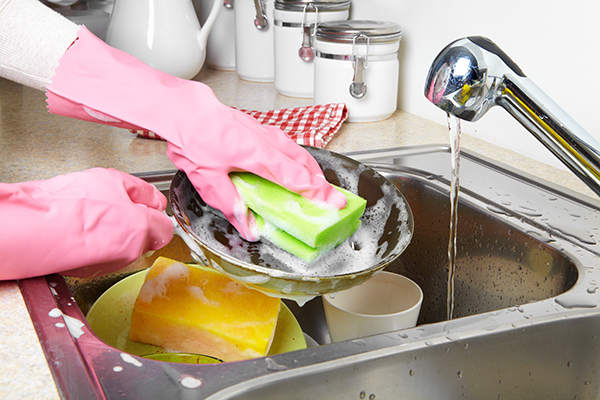UNDERSTANDING TIME AS A CONTROL FOR PUBLIC HEALTH
Much of our business that revolves around food safety is governed by temperatures. The endpoint cooking temperature of ground beef, the hot holding temperature on the line, the temperature of our refrigerators, or what the key temperatures are for cooling – the temperatures that many of us can recite in our sleep. But there are times when temperature control is just simply not possible. I remember several instances in my foodservice life where we didn’t have the luxury of having refrigeration, or where we were catering an outdoor event, and no matter how “windproof” our sternos and chaffing dishes were meant to be, the brisk Iowa wind would blow out the flame. This is where the food code section on time as a public health control comes into play.
Last week, I was helping with the development of a food safety exam, and I was reminded of just how confusing and misunderstood this section of the food code could be – for employees, managers, and seasoned professionals, alike. The code spells out this information in Section 3-501.19.
We all know that hot food must be kept at a temperature greater than 135˚F and cold food less than 41˚F, but at times when you are not able to maintain those temperatures, the code allows you to use time to keep food safe. To use this provision of the code, you do have to have a written procedure that you have prepared in advance, which can be made available to the inspector if they inquire about your procedures.
WE ALL KNOW THAT HOT FOOD MUST BE KEPT AT A TEMPERATURE GREATER THAN 135˚F OR LESS THAN 41˚F, BUT WHEN YOU ARE NOT ABLE TO MAINTAIN THOSE TEMPERATURES, THE CODE ALLOWS YOU TO USE TIME AS A MEASURE TO KEEP FOOD SAFE.
The next requirement is to make sure you have held the food properly at the correct temperature before you remove it from temperature control. In the case of hot food, it should be held at a temperature greater than 135˚F and cold food should have been kept at a temperature less than 41˚F.
Then, once it is removed from temperature control (for example, placed on a buffet line), record the time of when it was removed from temperature control and when it must be discarded. Once the four-hour mark has been reached, the food must have been served or discarded. It cannot be reheated to temperature and saved, or served again, it must be discarded.
There is, however, also a provision in the code that allows you to keep food for up to a maximum of six hours. This is only permissible for cold food (that is, food removed from temperature control at 41˚F or less). Again, the food shall be marked with the time at which it was removed from temperature control and the time at which the six-hour point will be met, at which point the food must be either served, cooked and served, or discarded. However, the food at no point shall exceed 70˚F during this six-hour period. Once the food exceeds the 70˚F point, it must be discarded.
Now for the usual disclaimer that I add at any time I discuss the food code. It is vital that you know your local food code and if the time as a public health control is allowed for in your specific jurisdiction and if there are any specific nuances that differs from the Model Food Code, which is what I base all of my blogs off, currently the 2022 code. Each jurisdiction has the ability to adopt any part of the model code or amend it to fit their standards, so when it doubt, call your inspector. Risk Nothing.
READ MORE POSTS
Welcome to National Food Safety Education Month!
In September of each year, we not only have the opportunity to celebrate Labor Day, but we also welcome National Food Safety Education Month! It is this time of the year when it is important to remember that Foodborne illnesses are still a major concern in the United States, although I am guessing many Americans don’t think about the safety of the food they eat as they go throughout their daily lives. The statistics show one in every six Americans will suffer from a foodborne illness each year, for a total of about 48 million cases each year.
Protecting Fresh Produce Post-Harvest, Integral to Safe Food
During the height of the summer, at least in the Midwest, farmers markets are in full swing and fresh produce is plentiful. Every backyard gardener is reaping the benefits of their work, with bountiful harvests of tomatoes and cucumbers. Everyone seems to have a neighbor who is trying to pawn off his or her over-production of cucumbers or summer squash during this time of year. When picking up that produce at the farmer’s market or from your neighbor down the street, have you ever given any thought to the microbial safety of it? Honestly, even in my position, it certainly is NOT the first thing that comes to my mind. But, earlier this month, I came across a news story out of Wisconsin discussing a Salmonella outbreak associated with shelled peas sold at a local farmers market. Who would have thought shelled peas would be impacted? The story noted, and it served as a great reminder, that most outbreaks associated with Salmonella in produce are due to mistakes made in handling or transportation of produce after harvesting.
Properly Cleaning and Sanitizing: The Right Chemical Mix to Maintain Ultimate Effectiveness
A few weeks ago, my family and I had the pleasure of setting sail on a cruise vacation. It is truly one of the only ways that I find that I am able to unplug from work and relax for a small spell. However, as I walked around the ship in our post-COVID world, I couldn’t help but admire all the extra cleaning steps the staff were undertaking to keep us all as safe as possible while in the middle of the ocean with 3,000 other vacationers. All of this cleaning and sanitizing had me thinking about how we each clean and sanitize our own operations and which chemicals we chose to use.
Proper Cooking Temperature: A Basic Food Safety Measure
Each summer, we see an increase in the incidence of foodborne illnesses. Perhaps this is because of the warmer temperatures making temperature control for Time/Temperature Control for Safety (TCS) food more difficult or perhaps it is the increased amount of people who are barbequing this time of year – it is National Picnic Month, after all!










